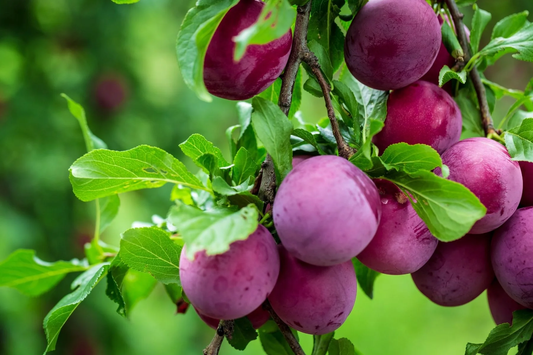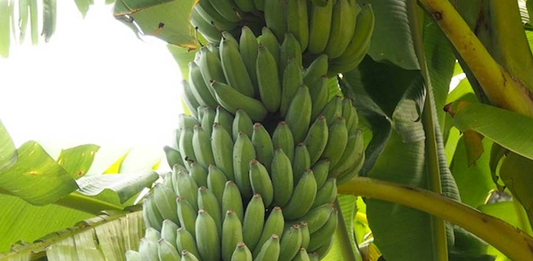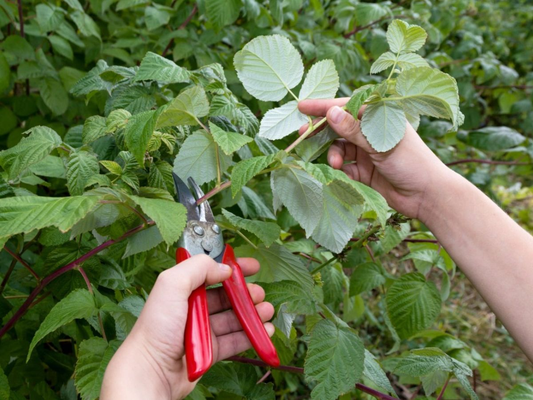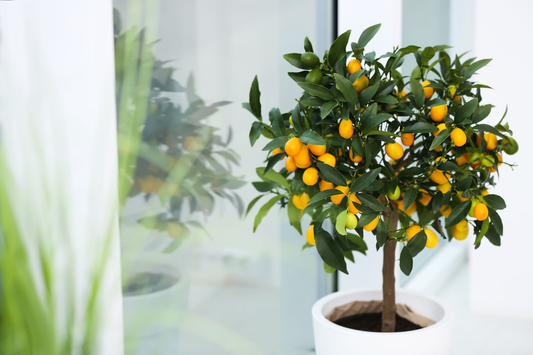Best Plants for Outdoor Shade
Share
- 1. Introduction
- 2. Understanding Shade in the Garden
- 3. Types of Shade Plants
- 4. Best Shade Plants for Different Garden Areas
- 5. Trees for Full Shade
- 6. Best Shrubs for Shade
- 7. Best Perennials for Shade
- 8. Groundcovers for Shade
- 9. Shade-Loving Flowering Plants
- 10. Tips for Growing Shade Plants
- 11. Common Mistakes to Avoid with Shade Plants
- 12. FAQ - Frequently Asked Questions
1. Introduction
Choosing the best plants for outdoor shade can be a rewarding task, as shaded garden areas present a unique set of opportunities and challenges. The key to transforming your shaded garden into a lush and thriving space is selecting the right plants that are well-suited for lower light conditions. Shaded areas, whether they're full shade, partial shade, or dappled sunlight, require careful consideration to ensure your plants will thrive. Understanding how to make the most of your shaded garden space is crucial for long-term success.
In shaded gardens, it's essential to recognize that plants may not have access to the same amount of sunlight as those in full sun. However, this doesn't mean your garden has to be without vibrancy or life. With the right plant selection, shaded gardens can be transformed into beautiful, low-maintenance spaces.
When selecting plants for shaded areas, there are several important factors to keep in mind:
- Limited sunlight: Shaded areas often receive very little direct sunlight, which means you need plants that can tolerate these low-light conditions.
- Moist soil: Shade often comes with moist conditions due to less evaporation, making it crucial to select plants that can thrive in such environments.
- Choosing appropriate varieties: Not all plants can handle shade, so it's important to select varieties that are specifically adapted to grow in low-light conditions.
Common challenges when planting in shade include:
- Excess moisture: Some shaded areas may retain too much moisture, leading to potential root rot or fungal diseases. It's important to choose plants that are well-drained and moisture-tolerant.
- Lack of flowering or color: Many plants struggle to bloom in low light, so selecting flowering varieties for shade is key to adding vibrancy.
- Slower growth rates: Plants in shade may grow slower due to reduced sunlight, so patience is needed while waiting for them to mature.
In this guide, we'll explore the best plants for outdoor shade and provide you with expert advice on how to overcome these common challenges. By choosing the right plants, you can create a beautiful, thriving garden even in the most shaded corners of your yard.

2. Understanding Shade in the Garden
In gardening, "shade" refers to areas that do not receive direct sunlight for a significant portion of the day. Different types of shade exist, and each can affect plant growth in unique ways. Understanding the different types of shade will help you choose the best plants for these conditions.
There are three main types of shade:
- Full Shade: This type of shade occurs in areas that receive little to no direct sunlight throughout the day. Full shade is typically found under dense tree canopies or on the north side of buildings where sunlight is blocked by structures.
- Partial Shade: Partial shade refers to areas that receive some direct sunlight, but for a limited number of hours each day (usually 2-4 hours). This shade often occurs in the early morning or late afternoon when the sun is less intense.
- Dappled Sunlight: Dappled sunlight is a type of shade where sunlight filters through trees or structures, creating a speckled effect on the ground. These areas receive intermittent light and shade throughout the day.
Each type of shade affects plant growth in different ways. For example:
- Full Shade: Plants in full shade tend to grow slower and may require less water, as the soil retains moisture longer in shaded areas.
- Partial Shade: Plants in partial shade benefit from occasional sunlight, which can encourage moderate growth and flowering.
- Dappled Sunlight: Plants in dappled sunlight may experience more balanced growth, with periods of light promoting flowering and periods of shade helping to retain moisture.
In addition to the amount of light, other factors influence plant growth in shaded areas:
- Moisture: Shaded areas often retain more moisture due to lower evaporation rates, which can be beneficial for plants that require consistent hydration.
- Soil Conditions: The type of soil in shaded areas can greatly affect plant health. Well-draining soil is essential, as excess moisture can lead to root rot.
- Temperature: Shaded areas tend to be cooler, which can be ideal for plants that prefer lower temperatures but may slow growth in others.
3. Types of Shade Plants
When selecting plants for shaded areas, it’s essential to match the plant's light requirements to the amount of shade in the garden. Below are the main types of shade plants and how they thrive in different light conditions:
Full Shade Plants: These plants thrive in areas that receive little to no direct sunlight. Typically, these spots receive less than 3 hours of sunlight per day. Full shade plants are adapted to survive in low-light environments and often have larger leaves or different types of foliage to capture available light.
- Ideal for: Areas under dense tree canopies, on the north side of buildings, or places where the sunlight is blocked by walls or fences.
- Examples: Ferns, hostas, astilbes, and bleeding hearts.
Partial Shade Plants: These plants are well-suited for areas that receive 3-4 hours of indirect or filtered sunlight per day. While they can tolerate a bit of sun, they thrive best when protected from the harsh midday rays.
- Ideal for: Areas with partial tree cover, spots that get morning sun or late afternoon light, or locations where sunlight is filtered through nearby structures.
- Examples: Columbine, foxglove, and primroses.
Dappled Shade Plants: These plants do best in areas where sunlight filters through trees or structures, creating a pattern of light and shade. The intermittent sunlight allows these plants to thrive without the full intensity of direct sun.
- Ideal for: Areas with tall trees that let light through, creating a dappled or speckled effect on the ground, or gardens with overhead structures like pergolas.
- Examples: Trilliums, astilbe, and violets.
4. Best Shade Plants for Different Garden Areas
When planning your shaded garden, it’s essential to choose the right plants that will thrive in various parts of your garden. Below are some of the best types of shade plants for different garden areas:
Ground Covers for Shade
Ground covers are low-growing plants perfect for filling empty spaces and providing a lush green carpet in shaded areas. These plants are ideal for preventing weed growth, reducing soil erosion, and adding texture to your garden.
- Hostas: Known for their large, lush leaves, hostas are perfect for ground cover in shaded areas and come in a variety of colors and textures.
- Ferns: Ferns like the Japanese Painted Fern thrive in shade and can cover large areas quickly.
- Creeping Thyme: A low-maintenance, drought-tolerant ground cover that can tolerate light shade, ideal for filling in between stepping stones or borders.
Shade Trees
Shade trees are larger plants that can provide coverage, create a canopy, and serve as the focal point of your shaded garden area. These trees are perfect for areas where you want a combination of shade and beauty.
- Japanese Maple: Known for its elegant branching and stunning fall colors, the Japanese Maple thrives in partial shade.
- Red Maple: This tree provides dense shade with beautiful red foliage, perfect for large shaded spaces.
- Silver Birch: Silver Birch trees are hardy and can provide dappled shade, offering an attractive focal point in a shaded garden.
Shrubs for Shade
Shrubs are ideal for adding height and structure to your shaded garden. They can be used as hedges or standalone specimens to create a sense of enclosure or privacy.
- Azaleas: These flowering shrubs are perfect for shaded areas and offer vibrant blooms in the spring.
- Rhododendrons: Known for their large, colorful flowers, rhododendrons thrive in shaded areas with moist, well-drained soil.
- Holly: A hardy shrub with glossy green leaves, holly can add evergreen structure to your shaded garden year-round.
Perennials for Shade
Perennials are plants that return year after year, making them a great investment for shaded areas that require low-maintenance, long-lasting plants.
- Bleeding Heart: With its distinctive heart-shaped flowers, bleeding heart thrives in moist, shaded areas.
- Astilbe: Known for its feathery plumes of pink, red, or white flowers, astilbe is perfect for shaded garden borders.
- Coral Bells: These plants have vibrant, colorful foliage and delicate flowers, making them ideal for shaded corners or under trees.
Flowering Plants for Shade
Adding flowering plants to your shaded garden will provide pops of color and vibrancy, transforming your garden into a lively, beautiful space.
- Impatiens: Known for their colorful blooms in shades of red, pink, and purple, impatiens thrive in full to partial shade.
- Begonias: These versatile plants add a splash of color with their bright flowers and can tolerate both partial and full shade.
- Foxglove: With its tall, elegant spikes of tubular flowers, foxglove adds vertical interest and color to shaded garden areas.

5. Trees for Full Shade
When selecting trees for full shade gardens, it’s important to choose species that can tolerate low light conditions while still providing structure and beauty to your landscape. Here are some excellent tree options for full shade gardens:
Japanese Maple
The Japanese Maple is a small to medium-sized tree that is perfect for shaded areas. With its vibrant foliage, it adds color and texture to the garden even in low light conditions. This tree typically grows between 10 to 25 feet tall, making it ideal for small spaces or as an accent tree.
- Height: 10 to 25 feet
- Size: Small to medium, compact
- Care: Needs well-drained soil and protection from harsh winds. It prefers partial to full shade and requires regular watering, especially in dry spells.
Red Maple
The Red Maple is a versatile tree that can thrive in a variety of soil types, making it a great option for full shade gardens. It provides brilliant autumn color and grows to a larger size than the Japanese Maple, often reaching heights of 40 to 60 feet. This tree does best in moist, well-drained soils.
- Height: 40 to 60 feet
- Size: Large, spreading canopy
- Care: Prefers moist soil but can tolerate a range of soil types. It requires regular water, especially during hot, dry weather.
Weeping Willow
The Weeping Willow is known for its graceful, cascading branches that create a dramatic effect in full shade gardens. This tree grows rapidly and can reach heights of 30 to 50 feet. It thrives in moist areas, making it an excellent choice for wet or low-lying parts of the garden.
- Height: 30 to 50 feet
- Size: Large, with a wide canopy
- Care: Prefers moist, well-drained soil and requires plenty of space due to its spreading branches. It may become invasive in some areas.
Pros and Cons of Each Tree
Here’s a quick comparison of the pros and cons of these three full shade trees:
| Tree | Pros | Cons |
|---|---|---|
| Japanese Maple | Beautiful foliage, compact size, suitable for small spaces | Needs well-drained soil, slow growth |
| Red Maple | Tolerates various soil types, beautiful autumn color | Large size, may need a lot of water |
| Weeping Willow | Graceful shape, perfect for moist areas | Requires a large space, can become invasive in some areas |
Each of these trees offers unique features and benefits, making them excellent choices for full shade gardens. Be sure to consider the space available, the soil conditions, and the level of care required when choosing the right tree for your garden.
6. Best Shrubs for Shade
When planning a garden for shaded areas, shrubs can provide essential structure, texture, and beauty. Many shrubs are perfectly suited for low-light environments and can thrive under the canopy of trees or in areas with filtered sunlight. Here are some of the best shrubs for shade:
Azaleas
Azaleas are among the most popular shrubs for shaded gardens, offering a spectacular display of vibrant colors in the spring. These low-maintenance shrubs come in a variety of shades, from soft pinks to bold reds and purples, and can bloom for several weeks. Azaleas typically grow between 3 and 6 feet tall and wide, making them ideal for small to medium-sized garden spaces.
- Care: Azaleas prefer slightly acidic, well-drained soil with consistent moisture. They thrive in partial to full shade and need protection from direct afternoon sun.
- Planting Conditions: Plant Azaleas in a sheltered location with good air circulation. They should be mulched to keep the roots cool and moist.
Rhododendrons
Rhododendrons are closely related to Azaleas and offer large, showy blooms and attractive evergreen foliage. These shrubs can grow quite large, reaching heights of 6 to 12 feet, and can add significant height and structure to shaded garden areas. The flowers range from whites to purples and reds, often appearing in spring or early summer.
- Care: Rhododendrons require acidic, well-drained soil and do best in moist, but not waterlogged, conditions. They tolerate full shade but perform best with some morning sunlight.
- Planting Conditions: Rhododendrons need a protected site with good drainage and can be prone to root rot in heavy clay soil. Mulching helps retain moisture and maintain root health.
Holly
Holly shrubs are a wonderful option for year-round interest in shaded gardens, as they are evergreen and provide structure and color even in winter. With glossy green leaves and bright red berries, they can be a focal point in the garden. Holly varieties range from small shrubs to large trees, but most common cultivars are around 4 to 8 feet in height.
- Care: Holly prefers slightly acidic soil and thrives in both dry and moist conditions. It tolerates full shade but will produce the most berries and growth in partial sunlight.
- Planting Conditions: Hollies need well-drained soil and benefit from regular pruning to maintain their shape. They can handle a variety of soil types, including clay and sandy soils.
These shade-loving shrubs offer a range of colors, textures, and sizes, making them ideal for adding structure and beauty to shaded garden spaces. Be sure to consider the specific growing requirements of each shrub to ensure a thriving, low-maintenance garden.

7. Best Perennials for Shade
Perennials are an excellent choice for shaded gardens, as they return year after year, offering lasting beauty with minimal effort. These plants can provide texture, color, and structure to garden beds, and because they are hardy, they are ideal for shaded areas where annuals might struggle. Here are some of the best shade-loving perennials:
Astilbe
Astilbe is a striking perennial known for its feathery, plume-like flowers that bloom in shades of pink, red, white, and purple. This plant is perfect for adding texture to a shaded garden and thrives in moist, well-drained soil. Astilbes grow to about 1 to 3 feet tall and are great for adding height and color to the back of a garden bed.
- Care: Astilbes prefer consistently moist soil, particularly in shaded areas where the soil tends to stay damp. They require regular watering during dry periods to ensure healthy growth.
- Light Tolerance: Astilbes thrive in partial to full shade but will tolerate a bit of morning sunlight. Too much direct sunlight can scorch their leaves.
Hostas
Hostas are one of the most popular shade-loving perennials due to their versatility, low maintenance, and variety of sizes, shapes, and colors. Hostas come in various shades of green, blue, and gold, and many have variegated leaves. They are perfect for use as ground cover and can form dense clusters that fill shaded areas beautifully. Hostas typically grow 1 to 3 feet tall.
- Care: Hostas are easy to care for and only require occasional watering. They thrive in moist, well-drained soil but can tolerate periods of dryness once established.
- Light Tolerance: Hostas prefer partial to full shade, especially in hotter climates where they can get sunburned. However, some varieties can tolerate a little morning sunlight.
Coral Bells
Coral Bells (Heuchera) are prized for their colorful foliage, which comes in shades of purple, red, silver, and green. They also produce small, bell-shaped flowers on tall stems, adding vertical interest to shaded garden areas. Coral Bells are great for planting in the front of garden beds or in containers. They typically grow 1 to 2 feet tall.
- Care: Coral Bells prefer well-drained soil and moderate moisture levels. They require watering during dry spells but can tolerate drier conditions once established.
- Light Tolerance: These plants thrive in partial to full shade, with some varieties tolerating a bit of morning sunlight. Too much direct sunlight can cause the foliage to fade.
8. Groundcovers for Shade
Groundcovers are a fantastic solution for shaded spaces, offering numerous benefits to gardeners. These low-growing plants can help reduce soil erosion, improve aesthetic appeal, and minimize weed growth, making them a valuable addition to any shaded garden. They also provide a natural, lush carpet that can fill in gaps and create a cohesive look. Here are some of the best shade-loving groundcovers:
Creeping Jenny
Creeping Jenny (Lysimachia nummularia) is a fast-spreading groundcover that thrives in shady areas. Known for its vibrant yellow-green leaves, it forms a dense mat that can help suppress weeds and reduce soil erosion. Creeping Jenny works well in both moist and moderately dry soil conditions, and it can tolerate some sun, though it prefers shade.
- Care: Creeping Jenny requires regular watering during dry periods but is relatively low-maintenance once established. It benefits from occasional pruning to keep it from becoming too invasive.
- Growth Tips: To encourage healthy growth, plant it in moist, well-drained soil and avoid planting it in overly dry or hot spots.
Pachysandra
Pachysandra (Pachysandra terminalis) is an evergreen groundcover that thrives in deep shade, making it perfect for dry or moist shaded spots. Its glossy, dark green leaves provide year-round interest, while its dense growth habit keeps weeds at bay. Pachysandra is an excellent choice for areas under trees or in other shaded, low-light locations.
- Care: This plant is easy to care for, requiring only occasional watering during dry spells. It does well in slightly acidic soil and needs protection from strong sunlight.
- Growth Tips: For best results, plant Pachysandra in rich, well-drained soil and ensure it has enough moisture throughout the growing season.
Lamium
Lamium (Lamium maculatum) is a versatile groundcover that adds both color and texture to shaded spaces. Known for its attractive foliage, which can be silver or green with spots, and its colorful blooms in shades of pink, purple, or white, Lamium is an excellent choice for brightening up shaded garden areas. It spreads quickly and can handle both dry and moist soil conditions.
- Care: Lamium is a low-maintenance plant that thrives with moderate moisture and occasional pruning to keep it tidy. It does well in a variety of soil types, from dry to slightly moist.
- Growth Tips: Encourage healthy growth by providing adequate moisture, especially during dry spells, and avoid over-watering, which can cause root rot.

9. Shade-Loving Flowering Plants
Flowering plants are an excellent way to bring color and vibrancy to shaded areas, transforming otherwise dull spaces into lively, attractive garden spots. While many plants require full sun to thrive, there are a variety of beautiful flowering plants that will do just as well in shaded areas. These plants can add a burst of color to your garden, whether in hanging baskets, along borders, or as focal points. Here are some of the best shade-loving flowering plants:
Begonias
Begonias are known for their bright, colorful flowers that bloom in shades of red, pink, white, and orange. They are perfect for shaded areas and can be used in containers, hanging baskets, or as bedding plants. Begonias are low-maintenance and can thrive in both moist and well-drained soil.
- Bloom Time: Begonias typically bloom from spring through fall, providing months of color in shaded spots.
- Care: They prefer consistent moisture, but the soil should not be soggy. Fertilize with a balanced liquid fertilizer to encourage continuous blooms.
- Environmental Preferences: Begonias do well in partial to full shade and can tolerate low light levels.
Foxglove
Foxgloves (Digitalis) are tall, elegant plants with tubular flowers that bloom in a range of colors, including purple, pink, white, and yellow. These plants are ideal for adding vertical interest to a shaded garden, making them a great choice for the back of garden beds or along shaded borders.
- Bloom Time: Foxglove flowers bloom in late spring to early summer, providing a beautiful display of color.
- Care: Foxgloves prefer slightly moist, well-drained soil and should be watered regularly, especially during dry periods. They benefit from a light application of fertilizer in the spring.
- Environmental Preferences: They thrive in partial to full shade and can tolerate some sun, although they prefer cooler, shaded conditions.
Impatiens
Impatiens are one of the most popular flowering plants for shaded areas, known for their vibrant blooms in shades of pink, red, white, purple, and orange. These plants are particularly well-suited for hanging baskets, containers, or along the edges of garden beds, adding cheerful pops of color.
- Bloom Time: Impatiens bloom continuously throughout the growing season, from spring until the first frost, providing long-lasting color.
- Care: Impatiens need consistently moist, well-drained soil and should be watered regularly. They benefit from occasional fertilization to promote healthy growth and abundant blooms.
- Environmental Preferences: Impatiens thrive in partial to full shade and are particularly useful in areas with low light levels.
10. Tips for Growing Shade Plants
To ensure your shade plants thrive, it’s essential to provide the right care and environment. While shade-loving plants are often easier to maintain, they still require attention to grow healthy and strong. Here are some key tips for growing and maintaining shade plants:
1. Proper Watering Techniques
Shade plants typically prefer consistently moist soil but are sensitive to overwatering. It’s important to water deeply, ensuring the roots get enough moisture, but also allow the soil to dry out between waterings to prevent root rot.
- Water in the morning to minimize evaporation and ensure the roots have time to absorb moisture.
- Use a drip irrigation system or watering can to deliver water directly to the base of the plant.
2. Soil Preparation
Shade plants thrive in well-drained, rich soil. It’s essential to prepare your soil before planting to ensure proper drainage and nutrient availability. Adding organic matter, such as compost, can improve soil structure and provide essential nutrients.
- Amend the soil with compost or peat moss to improve moisture retention while maintaining good drainage.
- If the soil is too dense or clay-like, mix in sand or organic matter to loosen it up and prevent waterlogging.
3. Fertilizing Shade Plants
Shade plants benefit from regular feeding to promote healthy growth, but be careful not to over-fertilize. A balanced, slow-release fertilizer is ideal for these plants.
- Use a balanced 10-10-10 fertilizer or a low-nitrogen formula for slow and steady growth.
- Fertilize in early spring before new growth begins and again mid-season if needed.
4. Pest Control for Shade Plants
Pest control is an important aspect of maintaining healthy shade plants. Common pests include aphids, slugs, and snails, which can damage the foliage of shade-loving plants.
- Check plants regularly for signs of pests and treat them with organic insecticidal soap or neem oil.
- Encourage beneficial insects, like ladybugs, which help control aphid populations.
5. General Care Advice
Maintaining a healthy shaded garden requires more than just watering and fertilizing. Here are a few additional tips for success:
- Ensure adequate air circulation around plants to prevent fungal diseases, especially in damp areas.
- Avoid overwatering, as this can lead to root rot and other issues.
- Apply a layer of mulch around plants to help retain moisture, regulate soil temperature, and suppress weeds.

11. Common Mistakes to Avoid with Shade Plants
When planting in shaded areas, it's easy to make mistakes that can hinder the growth and health of your plants. Understanding these common issues can help you avoid costly errors and ensure your shade plants thrive. Here are some of the most frequent mistakes to avoid:
1. Planting the Wrong Type of Plant for Specific Shade Conditions
Different types of shade (full, partial, or dappled) require different kinds of plants. One common mistake is choosing plants that aren’t suited to the level of shade in your garden. For instance, a full shade plant may struggle if planted in partial shade, and vice versa.
- Before planting, assess your garden’s light levels to choose plants that match the specific shade conditions.
2. Overwatering in Shady Areas
While it’s essential to keep shade plants adequately watered, overwatering is a common issue in shaded areas. Shaded spots often retain moisture longer, and excessive water can lead to root rot or fungal growth.
- Allow the soil to dry out slightly between waterings, especially in shaded areas with slower evaporation.
3. Neglecting to Check Soil Drainage
Soil drainage is crucial for the health of shade plants. Inadequate drainage can result in waterlogged soil, which is detrimental to plant roots. It's important to check the drainage of your garden soil before planting.
- Ensure your soil has good drainage by incorporating organic matter, sand, or peat moss if needed.
4. Failing to Give Shade Plants Enough Space to Grow
Shade plants still need adequate space to grow and spread. Planting them too close together can cause overcrowding, competition for nutrients, and poor airflow, which may lead to disease.
- Give each plant sufficient space according to its size and growth habits to ensure healthy development.
Avoiding these common mistakes will help create a thriving shaded garden where your plants can grow to their full potential.
12. FAQ - Frequently Asked Questions
Here are some frequently asked questions regarding shade plants to help you better understand how to care for your shaded garden.
1. What are the best plants for deep shade?
Deep shade refers to areas with very little or no direct sunlight. For these conditions, choose plants that can thrive in almost complete darkness. Some of the best plants for deep shade include:
- Japanese Fern
- Hostas
- Astilbe
- Foxglove
- Begonias
2. How can I tell if my garden area is full shade or partial shade?
To determine if your garden is in full shade or partial shade, consider the amount of direct sunlight the area receives each day. Full shade is an area that receives less than 3 hours of direct sunlight, while partial shade gets around 3-4 hours of sunlight. Observe your garden throughout the day to assess how much sunlight it gets.
3. Can flowering plants survive in full shade?
Yes, there are several flowering plants that can survive in full shade. These plants have adapted to low-light environments and typically require less sunlight for blooming. Some shade-tolerant flowering plants include:
- Begonias
- Impatiens
- Foxglove
- Astilbe
These plants will need moist, well-drained soil to thrive in shaded conditions.
4. How do I prepare soil for shade-loving plants?
Soil preparation is crucial for the success of shade-loving plants. In shaded areas, soil often tends to be denser and may lack nutrients. Here are a few tips to improve soil conditions:
- Incorporate organic matter like compost to improve soil texture and fertility.
- Ensure good drainage by adding sand or perlite if the soil is too heavy or clay-like.
- Test soil pH and amend it if necessary, as some shade-loving plants prefer slightly acidic or neutral soil.
5. What are the benefits of planting groundcovers in shaded areas?
Groundcovers offer multiple benefits when planted in shaded spaces:
- They reduce soil erosion by stabilizing the soil with their spreading roots.
- They suppress weed growth by covering the ground and blocking sunlight.
- They enhance the aesthetic appeal of shaded areas with a lush, green carpet of foliage.
- They provide a low-maintenance solution to cover large areas in shaded gardens.




